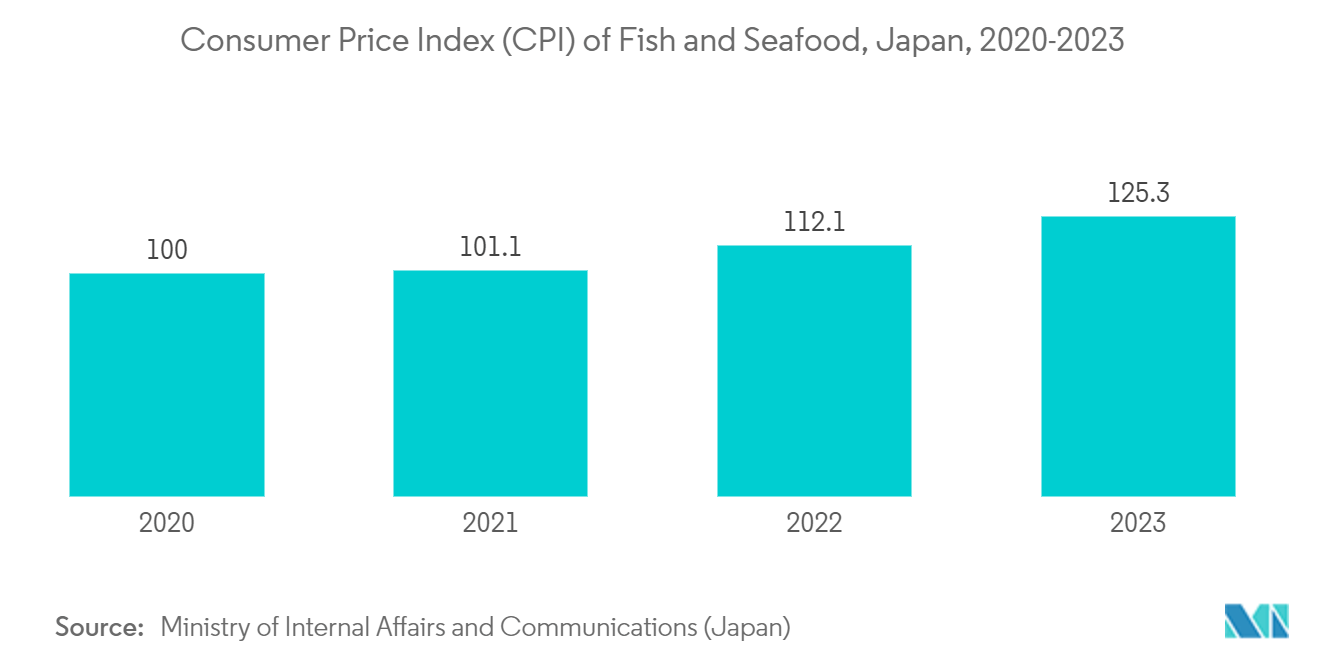Market Trends of Japan Flexible Plastic Packaging Industry
The Demand for Convenience and Ready-to-Eat Food is Increasing
- Brands in the packaging industry are pivoting toward enhancing brand experiences, with a notable emphasis on convenience. Flexible plastic packaging products such as pouches are witnessing a surge in demand from both consumers and manufacturers due to their convenience. This shift highlights the rising recognition of flexible packaging as a cornerstone in fostering brand loyalty.
- The uptick in urbanization is steering a heightened emphasis on convenience and sustainability in packaging. In 2023, Japan's urban population reached 92%, significantly rising from 75% in 1974. This growth, at an average annual rate of 0.42%, highlighted Japan's increasingly urban landscape. Also, according to the Statistics Bureau of Japan, the average monthly expenditure of food in Japan, by category, while eating out was JPY 11,559 (USD 72.49) in 2023, followed by prepared food, which was JPY 10,575 (USD 66.32). These two categories might boost the demand for flexible plastic packaging.
- As segments like fresh food, prepared meals, ready-to-eat meals, pet food, and coffee, which require convenient packaging, continue to grow, the need for pouch packaging is set to surge. A broader industry trend is the transition from rigid to flexible packaging, aligning with evolving lifestyles and the rise of smaller households, thereby amplifying the call for single-serve solutions.
- Concurrently, mirroring the rise in single-person households, a significant portion of consumers, notably the younger demographic, is gravitating toward more frequent, smaller grocery runs. This trend is fueled by the desire to have their favorite products at hand wherever they go.
- Furthermore, the evolving lifestyles fuel a surge in demand for ready-to-eat foods. This demand is hitting record highs, driven by an increasingly time-strapped workforce and a Gen Z cohort that values convenience. To meet these demands, manufacturers are integrating cutting-edge technologies into flexible plastic packaging, enhancing barrier capabilities against moisture and oxygen. Such advancements are pivotal in ensuring the extended shelf life of ready-to-eat products, where product integrity is paramount.

The Food Industry is Expected to Increase the Usage of Flexible Plastic Packaging Products
- Japan’s fast-paced lifestyle has bolstered the demand for pouch packaging, particularly in single-serving meals and snacks. This trend reflects a demand for convenience and innovation in the retail experience.
- In Japan, consumers are increasingly using retort pouches, particularly for sauces and curries. Retort pouches can replace conventional cans because they are made of laminated plastic, which can withstand the thermal processing used for sterilizing.
- Pouch packaging is more affordable than cans, especially in nations that must import metal for canning, which is the key driver promoting acceptance in Japan. The market for retort pouch packaging in meat, poultry, and fish products is influenced by enduring qualities like sustainability, transparency, food safety, and reduction in food waste.
- According to the Ministry of Internal Affairs and Communications (Japan), the consumer price index (CPI) of fish and seafood in Japan was 125.3 in 2023, an increase from 100 in 2020. This indicated that consumers spent more on food over the years, driving market growth.
- The region is witnessing a surge in recycling initiatives and recyclable product innovations for sustainable development in packaging material adoption. One example is Kaneyoshi, a Seafood-processing company in Japan, which is leveraging Japan’s recycling and tax systems to increase sales of its plastic-packaged consumer products.
- In October 2023, Kaneyoshi displayed its line of seafood packed in plastic pouches at the FOODEX in Kansai trade show held in summer in Osaka, Japan. By responding to the increasing demand for shelf-stable yet premium food products, the company aims to capitalize on the market trend.


